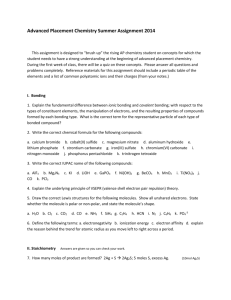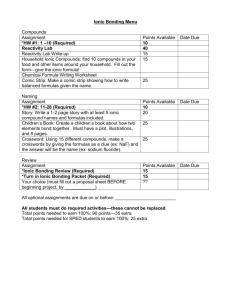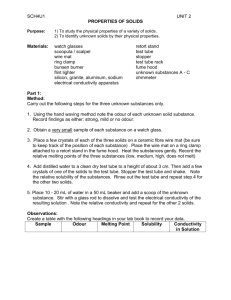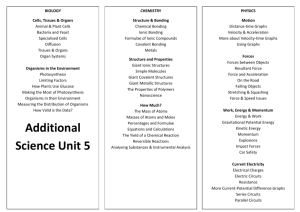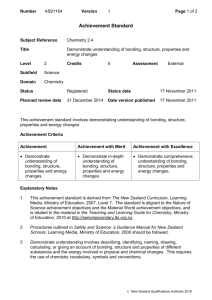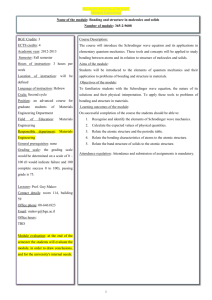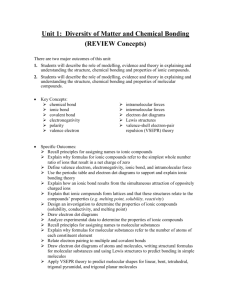Types of Bonding in Solids Lab
advertisement
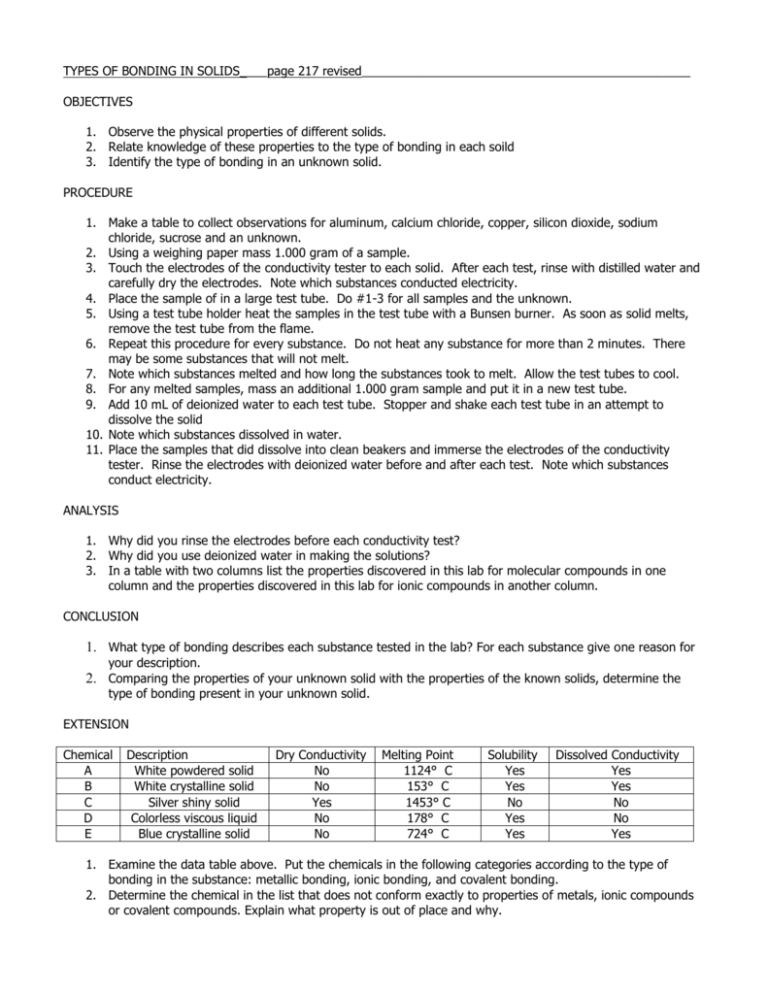
TYPES OF BONDING IN SOLIDS____page 217 revised________________________________________________ OBJECTIVES 1. Observe the physical properties of different solids. 2. Relate knowledge of these properties to the type of bonding in each soild 3. Identify the type of bonding in an unknown solid. PROCEDURE 1. Make a table to collect observations for aluminum, calcium chloride, copper, silicon dioxide, sodium chloride, sucrose and an unknown. 2. Using a weighing paper mass 1.000 gram of a sample. 3. Touch the electrodes of the conductivity tester to each solid. After each test, rinse with distilled water and carefully dry the electrodes. Note which substances conducted electricity. 4. Place the sample of in a large test tube. Do #1-3 for all samples and the unknown. 5. Using a test tube holder heat the samples in the test tube with a Bunsen burner. As soon as solid melts, remove the test tube from the flame. 6. Repeat this procedure for every substance. Do not heat any substance for more than 2 minutes. There may be some substances that will not melt. 7. Note which substances melted and how long the substances took to melt. Allow the test tubes to cool. 8. For any melted samples, mass an additional 1.000 gram sample and put it in a new test tube. 9. Add 10 mL of deionized water to each test tube. Stopper and shake each test tube in an attempt to dissolve the solid 10. Note which substances dissolved in water. 11. Place the samples that did dissolve into clean beakers and immerse the electrodes of the conductivity tester. Rinse the electrodes with deionized water before and after each test. Note which substances conduct electricity. ANALYSIS 1. Why did you rinse the electrodes before each conductivity test? 2. Why did you use deionized water in making the solutions? 3. In a table with two columns list the properties discovered in this lab for molecular compounds in one column and the properties discovered in this lab for ionic compounds in another column. CONCLUSION 1. What type of bonding describes each substance tested in the lab? For each substance give one reason for your description. 2. Comparing the properties of your unknown solid with the properties of the known solids, determine the type of bonding present in your unknown solid. EXTENSION Chemical A B C D E Description White powdered solid White crystalline solid Silver shiny solid Colorless viscous liquid Blue crystalline solid Dry Conductivity No No Yes No No Melting Point 1124° C 153° C 1453° C 178° C 724° C Solubility Yes Yes No Yes Yes Dissolved Conductivity Yes Yes No No Yes 1. Examine the data table above. Put the chemicals in the following categories according to the type of bonding in the substance: metallic bonding, ionic bonding, and covalent bonding. 2. Determine the chemical in the list that does not conform exactly to properties of metals, ionic compounds or covalent compounds. Explain what property is out of place and why.
